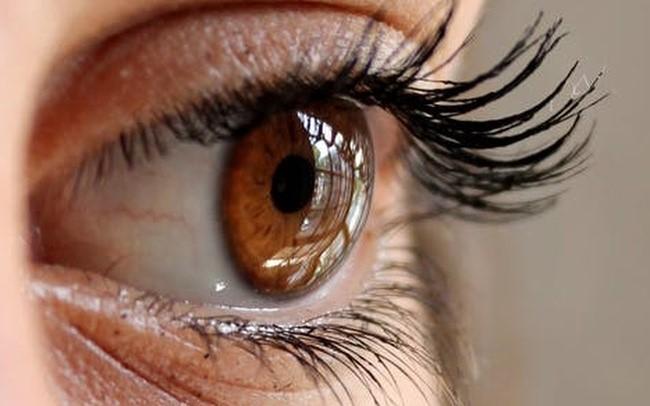Diabetic neuropathy
Peer reviewed by Dr Colin Tidy, MRCGPLast updated by Dr Rosalyn Adleman, MRCGPLast updated 1 Mar 2023
Meets Patient’s editorial guidelines
- DownloadDownload
- Share
- Language
- Discussion
In this series:DiabetesDiabetes and high blood pressureDiabetic foot ulcersDiabetic kidney diseaseDiabetic amyotrophyBlood glucose test (blood sugar) and HbA1c
Diabetic neuropathy is a type of nerve damage that can occur if you have diabetes. Diabetic neuropathy is a common complication of both type 1 diabetes and type 2 diabetes.
The best way to prevent or treat diabetic neuropathy is to keep your blood sugar (glucose) and blood pressure well controlled, to attend regular diabetes checks and to avoid smoking. The outcome for early diabetic neuropathy can be good but severe neuropathy is often associated with a poor outcome.
Sign up for our free 10-week Diabetes course!
Each week, we'll explore a different topic to help you better understand and manage your diabetes, including everyday living and medicines, to mental wellbeing, the latest in diabetes tech, and nutrition.
By subscribing you accept our Privacy Policy. You can unsubscribe at any time. We never sell your data.
In this article:
Continue reading below
What is diabetic neuropathy?
Diabetic neuropathy is a type of nerve damage that can occur if you have type 1 diabetes or type 2 diabetes.
Your peripheral nervous system is a network of nerves called peripheral nerves. These transmit information between your central nervous system (your brain and spinal cord) and all the other parts of your body, including your arms, legs and organs. Your peripheral nervous system is divided into:
Sensory nerves
Electrical impulses transmitted along your sensory nerves allow you to touch and feel sensations such as heat, cold and pain. The information from the sensory nerves passes to your spinal cord and brain.
Motor nerves
Electrical impulses that pass along these nerves pass information from your brain and spinal cord to stimulate your muscles to move.
Autonomic nerves
Your autonomic nervous system controls involuntary actions, such as the beating of your heart and the widening or narrowing of your blood vessels. When something goes wrong in this system, it can cause serious problems which can affect:
Your blood pressure.
Your heart.
Your breathing and swallowing.
Your digestive system.
In men, their ability to have/maintain erections during sex - a condition known as erectile dysfunction (impotence).
Diabetic neuropathy can cause problems with the sensory, motor and autonomic nerves. Diabetic neuropathy most often causes damage to the nerves in your legs and feet. See also the separate leaflet called Peripheral Neuropathy.
How common is diabetic neuropathy?
Diabetic neuropathy is a common complication of both type 1 diabetes and type 2 diabetes. More than half of people with type 2 diabetes who are older than 60 years have peripheral neuropathy. Persistent painful neuropathy affects up to 1 in 4 people with diabetes.
Continue reading below
Who is at risk of developing diabetic neuropathy?
All people with diabetes have a risk of developing diabetic neuropathy. The risk is increased by:
Smoking.
Poor control of blood sugar (glucose) levels.
Increasing length of time that you have had diabetes.
Being overweight.
High blood pressure.
Coronary heart disease (if you have angina or have had a heart attack).
You are also more likely to develop diabetic neuropathy if you have other complications of diabetes, such as kidney disease or eye disease.
Diabetic neuropathy symptoms
Neuropathy is one of the long-term complications of diabetes. Diabetic neuropathy can cause problems with the sensory or motor nerves, or with the autonomic nervous system.
Sensory neuropathy
Sensory neuropathy affects the nerves that carry messages of touch, pain, temperature and other sensations to the brain. It mainly affects the nerves in the feet and the legs. The nerves to the arms and hands may also be affected but this is less common. The symptoms may include:
Tingling.
Numbness - unable to feel light touch.
Being unable to feel pain.
Being unable to detect changes in temperature.
Being unaware of the position of a joint and so unable to coordinate movement of that joint.
Burning or shooting pains, which tend to be worse during the night.
Your feet are at greatest risk from sensory neuropathy. The loss of feeling may make you unaware of minor injuries to the foot, such as when walking barefoot, or your shoes rubbing against your skin. If any such minor injury is ignored then the wound may become infected or form an ulcer. The diabetes foot care leaflet provides more details.
Autonomic neuropathy
Damage to the autonomic nervous system may cause a variety of symptoms, such as:
Problems with the function of your gut (bowel), such as bloating, constipation or diarrhoea.
Blood pressure problems, including low blood pressure (hypotension), which may cause dizziness or even cause you to collapse on to the ground.
Loss of awareness of low blood sugar levels (hypoglycaemia).
Loss of bladder control (incontinence of urine).
Irregular heartbeats may cause a feeling of having a 'thumping heart' (palpitations).
Problems with sweating, such as less ability to sweat, feeling unable to cope with warm or hot weather, or sweating whenever you eat food.
Men may have difficulty with erections during sex - impotence (erectile dysfunction).
Motor neuropathy
Damage to the motor nerves causes weakness and wasting of the muscles that receive messages from the affected nerves. The symptoms caused by motor neuropathy may include difficulty with walking, falls or problems using your hands for everyday tasks. Motor neuropathy may also cause muscle twitching and cramps.
Other symptoms
Diabetic neuropathy may also cause severe pain, tingling, weakness and muscle wasting in the thighs and pelvis. This is called diabetic amyotrophy. This is usually caused by very poor control of blood sugar (glucose) levels. The symptoms usually improve when control of blood glucose levels improves.
Continue reading below
How is diabetic neuropathy diagnosed?
If you have any symptoms suggesting diabetic neuropathy your doctor or nurse will make a thorough assessment of your diabetes and blood pressure control. You will also have some blood tests to check your diabetes control and to check whether there is any other cause for your symptoms. The investigations may also include testing the nerves and muscles (nerve conduction studies and electromyography).
Treating diabetic neuropathy
You should see your GP, Practice Nurse or Diabetes Nurse if you think you may have diabetic neuropathy or if you have any concerns about your feet.
Good blood sugar (glucose) and blood pressure control and not smoking are very important to prevent the symptoms of diabetic neuropathy becoming any worse. It is also very important to prevent any minor injuries to your feet, so you should avoid walking barefoot and always wear comfortable well-fitted shoes.
Your doctor or nurse may refer you to see a podiatrist to help prevent or treat any problems with your feet. A podiatrist is qualified to diagnose and treat foot disorders.
There are many treatments available to relieve the symptoms caused by neuropathy. This may include medications for feeling sick (nausea) and being sick (vomiting) or treatment to help with impotence (erectile dysfunction).
The pain caused by neuropathy (called neuropathic pain) can also be treated. See also the separate leaflet called Neuropathic Pain (Neuralgia).
What is the outlook?
The outcome (prognosis) can be good if diabetic neuropathy is diagnosed and treated early. Early treatment for any foot problems will also help to improve the outcome.
However, diabetic neuropathy can progress and cause severe problems and even early death. These problems may include foot problems (burns, injuries, ulcers and infections) and an increased risk of needing removal of a foot or part of the leg (amputation).
Diabetic neuropathy is also associated with other diabetes complications (including heart disease, kidney disease and diabetic eye problems).
Can diabetic neuropathy be prevented?
You can reduce your risk of diabetic neuropathy by:
Not smoking.
Attending all of your diabetes review appointments. This will help to make sure you are receiving the best treatment for your diabetes. It will diagnose any problems at any early stage, when treatment can be more effective.
Keeping your blood sugar (glucose) and blood pressure levels within your target range.
Having your feet checked at least once each year.
Patient picks for Living with diabetes

Diabetes
Hypoglycaemia
Low blood sugar (hypoglycaemia) is often known as a 'hypo'. It can make you feel unwell and affect your ability to drive. Simple steps will reduce the risk, and allow you to treat a hypo early, before it causes more serious complications.
by Dr Colin Tidy, MRCGP

Diabetes
Diabetic retinopathy
If you have diabetes, it is vital that you have your eyes checked regularly. The retina is at the back of the eye and damage to the retina (the light sensitive layer of cells) is called a retinopathy. Retinopathy is a common complication of diabetes. If left untreated, it can become worse and cause some loss of vision, or total loss of vision (severe sight impairment) in severe cases. Good control of blood sugar (glucose) and blood pressure slows down the progression of retinopathy. Treatment with a laser, before the retinopathy becomes severe, can often prevent loss of vision.
by Dr Hayley Willacy, FRCGP
Further reading and references
- Management of diabetes; Scottish Intercollegiate Guidelines Network - SIGN (March 2010 - updated November 2017)
- Diabetes UK
- Type 1 diabetes in adults: diagnosis and management; NICE Guidelines (August 2015 - last updated August 2022)
- Diabetes (type 1 and type 2) in children and young people: diagnosis and management; NICE Guidelines (Aug 2015 - updated May 2023)
- Diabetic foot problems: prevention and management; NICE Guidelines (August 2015 - last updated October 2019)
- Type 2 diabetes in adults: management; NICE Guidance (December 2015 - last updated June 2022)
Article history
The information on this page is written and peer reviewed by qualified clinicians.
Next review due: 28 Feb 2028
1 Mar 2023 | Latest version
30 Oct 2017 | Originally published
Authored by:
Dr Colin Tidy, MRCGP

Ask, share, connect.
Browse discussions, ask questions, and share experiences across hundreds of health topics.

Feeling unwell?
Assess your symptoms online for free
Sign up to the Patient newsletter
Your weekly dose of clear, trustworthy health advice - written to help you feel informed, confident and in control.
By subscribing you accept our Privacy Policy. You can unsubscribe at any time. We never sell your data.